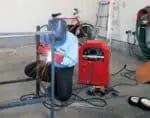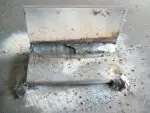Not all welding techniques are applicable for all metals because they differ from thickness to composition to melting points!
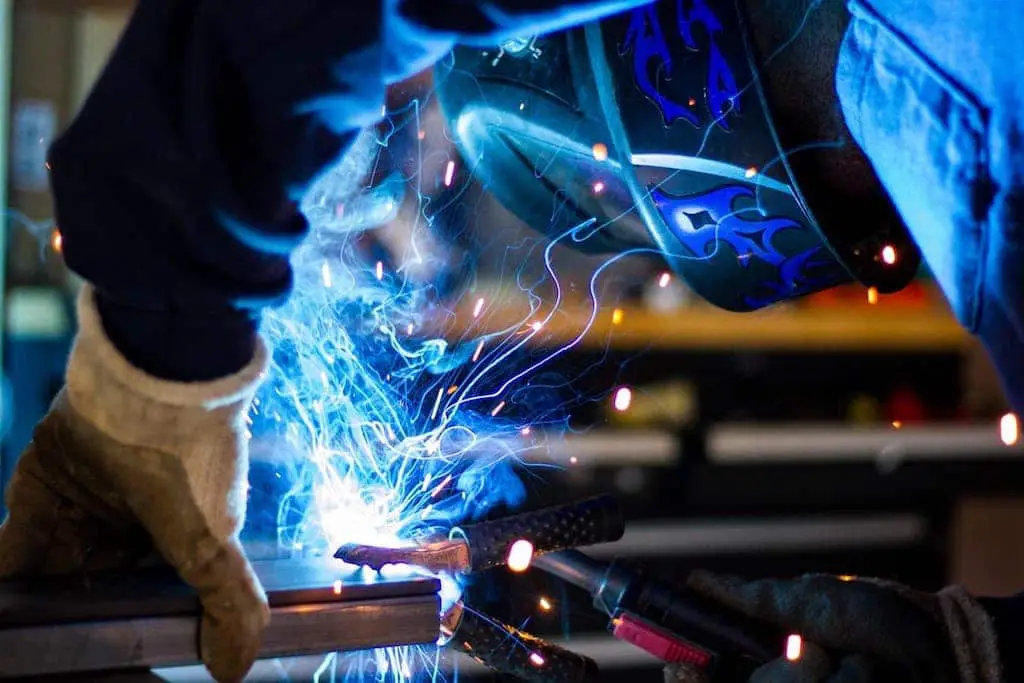 Applying the wrong technique to weld a particular metal can lead to defective welds and might be risky as well.
Applying the wrong technique to weld a particular metal can lead to defective welds and might be risky as well.
Welding steel is easy but here also you need to know the right techniques of welding that you can apply or else it will lead to distortions in the weld.
But steel has a tendency to bend while and after the welding process and therefore you need to learn the ways to keep steel from bending and one such procedure is using water-cooled jig while the others are reducing the weld time, using peening and clamping!
This article will let you learn 10 ways to weld steel and 14 ways to keep steel from bending!
So, why wait?
Let’s begin reading….
10 ways to Weld Steel/Stainless steel
The type of welding technique for steel will depend on the thickness as well as the finish of the metal. While there are a number of ways to weld steel, I will share with you the 3 most common and useful ways to weld steel and they are:
-
-
- TIG welding
- MIG welding
- Resistance welding
- Flux cored arc welding
- Metal cored arc welding
- Laser beam welding (LBW)
- Plasma arc welding (PAW)
- Electron beam welding (EBW)
- Shielded metal arc welding (SMAW)
- Friction stir welding
-
1. TIG welding: Highest quality steel weld
TIG welding is commonly known as Gas Tungsten Arc Welding. This technique makes use of non-consumable tungsten electrode in order to obtain the weld.
The electric current works through a tungsten electrode that generates the heat required to melt the base material and then create an arc that melts the wires and creates the weld pool.
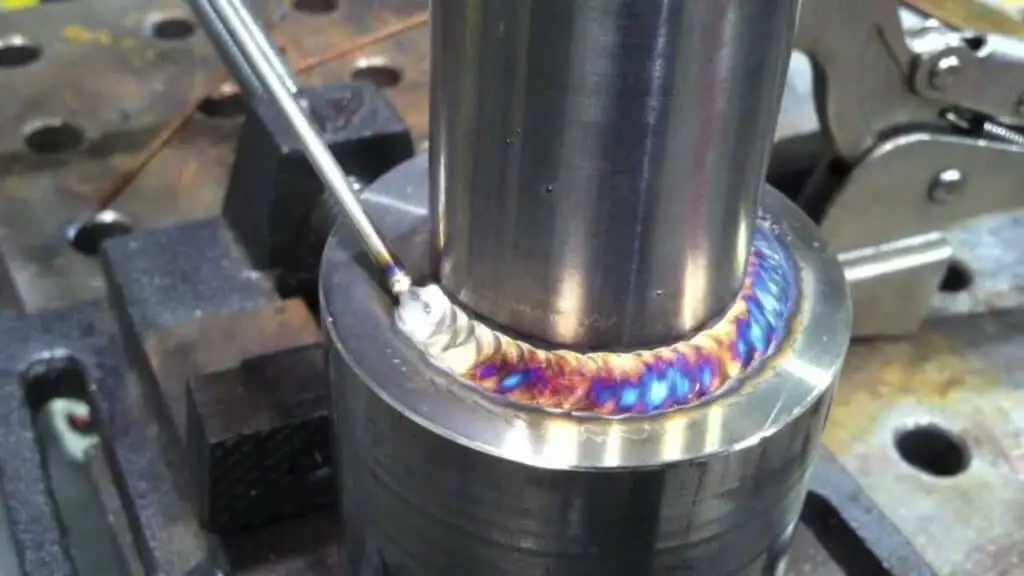
The advantage of this technique is that:
-
-
- It offers versatility, longevity and high quality weld.
- TIG welding is used for thin steel sheets because it creates low heat input
-
Requirements:
-
-
- Use direct current and electrode negative polarity
- The shielding gas used are 100% argon or helium
- In order to avoid corrosion, use stainless steel filler metal
- The filler metals used should be of low carbon stainless steel or the stabilized grades
- The base metal should also be of low carbon or stabilized grade
- In order to prevent distortions, the travel speed should be kept high and the heat inputs should be kept low
-
2. MIG welding: Huge project and want speed
This welding is commonly known as Gas Metal Arc Welding. It is commonly used to weld stainless steel, carbon steel and mild steel.
It makes use of a gas cylinder, regulator, power source, wire feed unit and a MIG torch. This process makes use of the wire welding electrode that is directly fed through a weld gun which ultimately creates the arc required to melt the base metals. Throughout these steps, an inert gas is used to protect the weld from atmospheric gases.
The advantage of this technique is that:
-
-
- It offers the strongest bond of the welded stainless steel metal pieces
- It allows the welder to use a pulsed current supply which makes it possible to reach the not-reachable spots on complex projects of stainless steel
- The welding speed is higher than rest all methods
-
Requirements:
-
-
- Lower amounts of oxygen and carbon dioxide is desirable so O2 & CO2 level must be kept as low as 2%
- Shielding gas can be a mixture of helium, argon and CO2 or O2
- A stainless steel welding wire must be used the weld requires corrosion resistance
- In order to prevent cracking of the weld, the filler wire and the base stainless steel should be of low carbon version or they should have stabilizers in the such as tantalum or niobium
-
3. Resistance welding or Spot welding: Most economical and easiest
This is considered one of the most economical welding types amongst all. It makes use of an electric current to heat the metal edges and then fix them together.
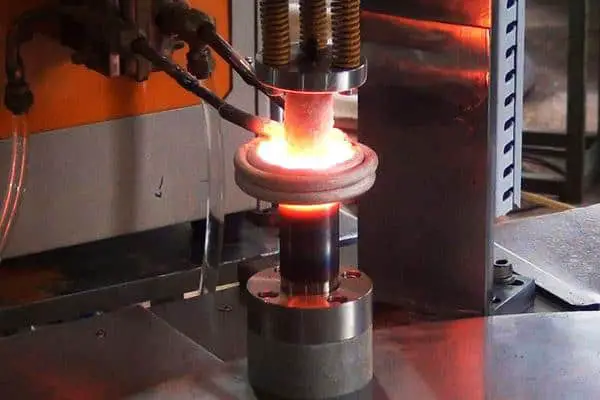
The advantage of this technique is that:
-
-
- It is a very versatile technique as it can be used on both small and large projects
- It can be tailored to tackle distortion of the metal and therefore, it is very productive on metals that have low melting points
-
4. Flux cored arc welding
FCAW uses a wire that serves as the electrode and the filer metal is fed through the hand. The wire has a core of flux that creates a gas shield around the weld thus eliminating the need of external gas supply.
It is a high heat welding method ad is used for heavy equipment repairs. This process also does not generate much waste.
Though it is not suitable to use flux core while welding steel, still this process can be used to weld steel if you meet the following requirements:
-
-
- Special gas mixtures should be used since gas-shielded flux cored arc welding shields the weld from the atmospheric gases
-
5. Laser beam arc welding (LBW)
This process is not manual, but automated. It is considered one of the fastest methods to weld stainless steel. As the name suggests, it makes use of a laser as the heat source to create the weld. It can be used on stainless steel, carbon steel and HSLA steels.
Requirements:
-
-
- The heat input should be kept very low and the travel speed should be very fast
- In order to reduce porosity and cracks, reduce the amount of oxygen through a shielding gas and weld parameter optimization
-
6. Metal cored arc welding
This process does not at all rely on flux and is therefore the one of the safest and best ways to weld stainless steel. The metal core of the filler metal does have certain deoxidizers but at the same time it is also packed with powdered metals that increase deposition.
Requirements:
-
-
- Make use of the proper shielding gas and wire feeding system
- A pulsed wave form or spray transfer arc is required to produce high quality welds of stainless steel
-
7. Shielded metal arc welding or SMAW
This method is commonly known as stick welding as is an age old manual technique of welding. This technique is only applicable on thinner metals, not more than 18 gauge.
This method makes use of an electric current to produce electric arc between the stick and the metal to be joined. The electrode stick serves as the filler metal here.
The arc created connects from the end of the stick into the filler metal thus creating the weld. As the stick is coated in flux, therefore, it produces a gas cloud which in turn protects the metal from oxidation when heated up.
Advantages of this technique:
-
-
- It has a consumable electrode that is coated in flux. This prevents the arc from getting unstable due to the presence of air.
- It is very useful in windy conditions
- No shielding gas is required in this process and is therefore very cost effective
-
8. Electron beam welding (EBW)
This method is performed by machines generally in vacuum. Here, a high velocity electron beams are used that create heat through kinetic energy, thus welding the two metals together.
9. Plasma arc welding (PAW)
This process is quite similar to GTAW, but uses a smaller arc for precision of the weld. The torch used achieves much higher temperature and the gas is pressurised inside the wand, thus creating the plasma.
The plasma is then ionized which makes it electrically conductive. This creates the arc, producing a high temperature to melt the base metals. This method makes use of no filler metals.
10. Friction stir welding
This is an autogenous keyhole that joins the two metals without creating any liquid metal. This method joins work pieces in the solid state with the use of an intermediate non-consumable tool. It makes use of the FSW tool of harder material than the base metal.
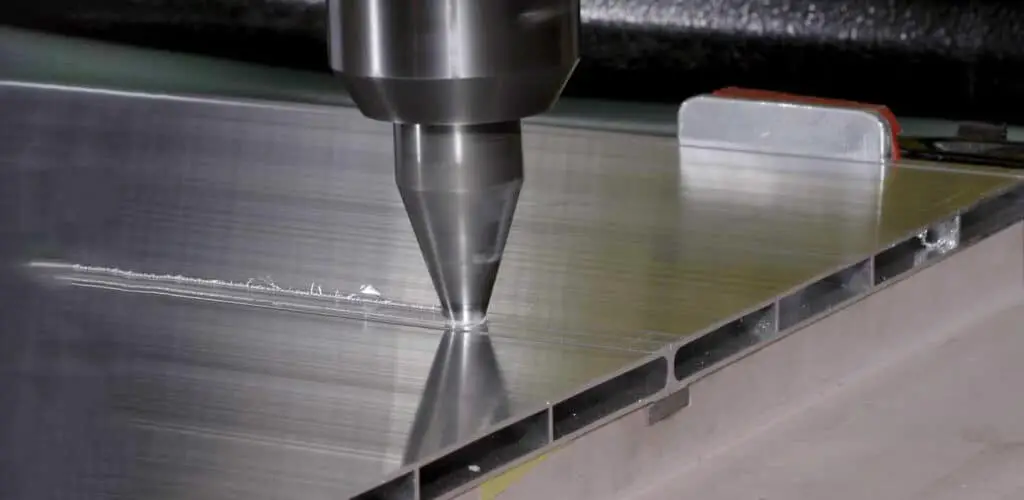
There is a huge temperature difference between the tool and the base metal and the cyclic movement between the tool and the base metal generates frictional heat to cause plasticised conditions in the base metal.
It involves slowly plunging a portion of a specially shaped rotating tool between and along the Faces of the joints. The contacting surface of the shoulder and the length below of the probe that is below the shoulder, allows the probe to maintain penetration to the required areas.
See also: How to remove spatter from steel
14 Ways to keep steel from bending
Steel bends during welding due to some welding distortions and here’s how you can avoid welding distortions:
1. Avoid over-welding
The bigger the size of the weld, the more the metal will tend to bend. In order to prevent this, keep the weld size small. Therefore, it is important to correctly size the weld to avoid distortions.
2. Try intermittent welding
Give some time gaps in between the welding. This is better than continuous welds as this will minimize the amount of the weld metal used and prevent distortion.
3. Apply fewer weld passes
It is important to know that you should always pass smaller numbers of big weld passes instead of more numbers of small passes. This will result in less accumulation of shrinkages and save the steel from bending.
4. Place the weld close to the central axis
This placement will prevent in pulling the plates out of the alignment and as a result lead to less distortion.
5. Try balancing the weld around the neutral axis
When you try to balance the weld around the neutral axis of the product and the weld on both the sides of the plate, it will lead one shrinkage force to counteract with the other and hence minimize distortion.
6. Use the back-step welding technique
This technique involves welding from left to right which leads to the deposition of each bead segment from right to left. This helps to reduce distortion.
7. Go through a few trial and error processes
This will help you to determine the amount of pre-set required before you begin the actual welding and thus help in decreasing shrinkages of the weld.
8. Try alternating welding sequence
What happens is that during assembly, the structure will tend to shrink in one place and counteract the shrinkage in another. This counteraction will ultimately help to prevent the distortion.
9. Make use of clamps
When you use clamps, they will lock the parts into the desired positions and thus limit distortions.
10. Try peening
Peening refers to striking the product with the help of the backside of a hammer. This will help to stretch the weld beads and thus relieve stress and keep the steel from bending.
11. You can also try thermal stress relief
This process involves controlled heating the weld to a high temperature and then following it by a controlled cooling. This will help to reduce stress that is pulling on the product.
12. Try to minimize the weld time
Try to use mechanized welding equipment to reduce the weld time because longer the weld time more will be the distortion.
13. Use strongback
This is a tool that helps to control distortion during the process of butt welding of plates.
14. Make use of water-cooled jig
This is a tool that helps to reduce distortion in sheet metal welding by carrying the heat away from the welded components and circulating water through the tubes during the entire welding process.
And it’s a wrap!
Choosing the best technique will entirely depend on what thickness of the steel you are using to weld. If you are welding very thin steel sheets, then go for TIG welding and if you want an affordable weld because you are on a budget, then go for SPOT welding!
That’s all for today! Hope you have a happy welding!




